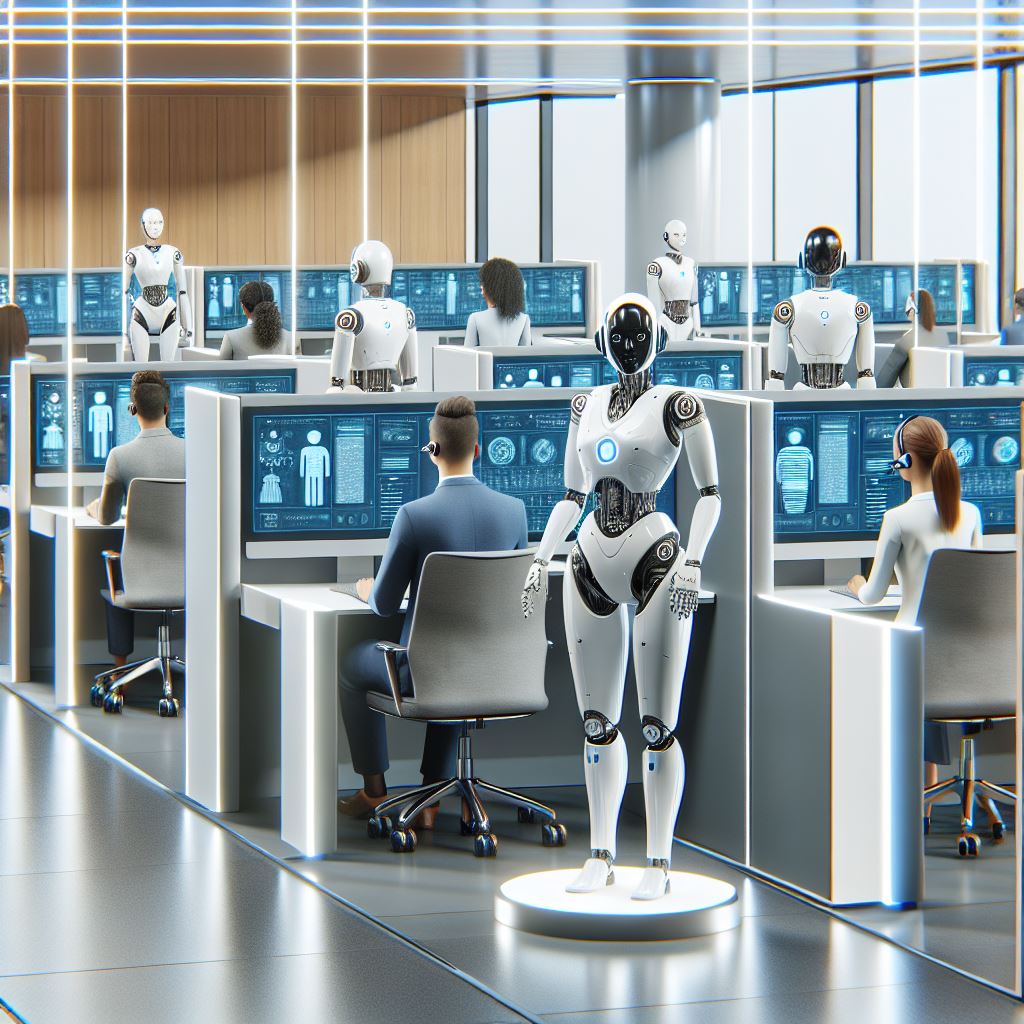AI in Education: Personalizing Learning for Every Student
Let me tell you about Mia, a 10-year-old who struggled with math.
Every night was a battle of tears and frustration as she tried to complete homework that felt impossible. Her parents were at their wits' end. Her teacher, Ms. Johnson, wanted to help but had 27 other students who needed attention too. Mia was falling behind, and her confidence was plummeting.
Then her school introduced an AI-powered math program. Within weeks, everything changed.
The system quickly identified that Mia wasn't struggling with all math concepts—just specific areas involving fractions and word problems. It adapted to her needs, presenting these concepts differently, using visual models that clicked with her learning style. It patiently walked her through problems, never getting frustrated, never moving too quickly. When she mastered a concept, it celebrated her success and built on that foundation.
Three months later, Mia was at grade level in math. More importantly, she no longer feared it.
"I like math now," she told her astonished parents. "The computer understands how I learn."
Mia's story isn't unique. It's playing out in classrooms worldwide as artificial intelligence transforms education in ways that were science fiction just a decade ago. Let's explore this revolution and what it means for students, teachers, and the future of learning.
The Personalization Revolution
Remember when "personalized learning" meant giving fast learners extra worksheets while the teacher spent more time with struggling students? Those days are rapidly disappearing.
Today's AI-powered educational tools can create truly individualized learning paths for every student. They continuously assess understanding, identify knowledge gaps, and adapt content, pace, and teaching methods to each learner's needs.
Take DreamBox Learning, an adaptive math platform used by millions of students. The system analyzes not just whether a student got a problem right or wrong, but how they solved it—which strategy they used, where they hesitated, what mistakes they made. It then adjusts instruction accordingly, presenting concepts in ways that match the student's learning style and current understanding.
"The system knows when to push students forward, when to review, and when to try a completely different approach," explains Dr. Sarah Martinez, an educational psychologist who studies adaptive learning. "It's like having a tutor who knows exactly how each student thinks and learns."
This level of personalization was impossible in traditional education models. Even the most dedicated teacher can't simultaneously provide 30 different lessons tailored to 30 different learning styles and knowledge levels. AI can.
The Teacher's New Assistant
But wait—does this mean AI will replace teachers? Absolutely not.
In fact, the most successful AI implementations in education enhance rather than replace the teacher's role. They handle routine tasks like grading multiple-choice assessments, tracking progress, and delivering basic instruction, freeing teachers to focus on what humans do best: providing emotional support, fostering critical thinking, facilitating discussions, and building relationships.
"AI has transformed my classroom," says Robert Chen, a high school science teacher in Portland. "Before, I spent hours grading quizzes and identifying who needed help with what concept. Now the system handles that, and I can spend my time actually working with students—having meaningful discussions, guiding projects, and connecting with kids who need extra emotional support."
Many teachers report that AI tools give them superpowers—the ability to be in 30 places at once, understanding exactly where each student stands and what they need next. Platforms like Teachable Machine provide real-time dashboards showing which students are struggling with which concepts, allowing for targeted intervention before a student falls too far behind.
"It's like having a teaching assistant who constantly monitors every student's progress and gives me actionable insights," says Chen. "I'm a better teacher because of it."
Beyond the Basics: AI for Higher-Order Thinking
Early educational AI focused primarily on basic skills and knowledge—math facts, vocabulary, grammar. But today's systems are increasingly capable of supporting higher-order thinking.
Platforms like Revision Assistant use natural language processing to provide feedback on student essays, not just on grammar and structure but on argumentation, evidence use, and logical flow. The system doesn't just mark errors; it asks questions that prompt deeper thinking: "Can you provide more evidence for this claim?" or "How does this paragraph connect to your thesis?"
In science education, virtual labs powered by AI allow students to conduct experiments that would be too dangerous, expensive, or time-consuming in real life. Students can manipulate variables, observe outcomes, and develop hypotheses in a guided environment that provides immediate feedback.
"These systems don't just teach facts; they teach thinking processes," explains Dr. Martinez. "They can model expert thinking in a domain and gradually scaffold students toward that level of sophistication."
Breaking Down Barriers
Perhaps the most profound impact of AI in education is its potential to break down barriers that have traditionally limited access to quality learning.
For students with disabilities, AI offers transformative possibilities. Text-to-speech and speech-to-text technologies help students with reading or writing difficulties. Computer vision systems can translate sign language in real-time. Predictive text tools support students who struggle with communication.
"My son has severe dyslexia," shares Maria Rodriguez, parent of a 14-year-old. "Before these AI tools, reading was torture for him. Now his textbooks can be read aloud, and he can dictate his assignments. He's finally able to show what he knows instead of being limited by his reading challenges."
Geographic and economic barriers are falling too. Platforms like Khan Academy provide free, AI-enhanced learning to anyone with internet access. In regions with teacher shortages, AI systems can deliver quality instruction that would otherwise be unavailable.
In rural India, the organization Pratham uses AI-powered tablets to provide personalized instruction to children with limited access to qualified teachers. The results have been remarkable, with significant improvements in basic literacy and numeracy skills.
"These technologies have the potential to democratize education in unprecedented ways," notes education researcher Dr. James Wilson. "A child in a remote village can potentially access the same quality of instruction as a student in an elite private school."
The Challenges Ahead
Despite these promising developments, significant challenges remain in the effective implementation of AI in education.
Privacy concerns are paramount. Educational AI systems collect vast amounts of data about students—their knowledge, learning patterns, strengths, and weaknesses. How this data is stored, who has access to it, and how long it's retained are critical questions that educational institutions must address.
There are also concerns about equity and access. While AI has the potential to democratize education, it could also widen existing gaps if only wealthy schools can afford the most sophisticated systems or if reliable internet access remains unavailable in some communities.
"We need to be intentional about how we deploy these technologies," cautions Dr. Wilson. "Without careful implementation, we risk creating a two-tiered system where some students benefit from AI-enhanced learning while others are left behind."
The quality and bias of AI systems also require careful consideration. If an AI is trained primarily on data from certain demographic groups, it may not work as effectively for others. Educational AI developers must ensure their systems work equitably for all students, regardless of background, language, or learning style.
The Future of Learning
Looking ahead, the integration of AI in education promises even more transformative possibilities.
Imagine virtual reality environments where students can explore ancient Rome guided by an AI tutor that adapts the experience to their interests and learning needs. Or collaborative projects where AI facilitates group work by matching students with complementary skills and mediating their interactions to ensure everyone contributes meaningfully.
"We're moving toward educational experiences that blur the line between learning and living," suggests educational futurist Dr. Maya Patel. "AI will increasingly enable learning that happens naturally, in context, guided by the learner's curiosity and supported by intelligent systems that know exactly when to provide information, when to ask questions, and when to step back."
For teachers, AI will continue to evolve as a partner rather than a replacement. "The future isn't AI instead of teachers," emphasizes Dr. Martinez. "It's teachers with AI—human expertise and judgment enhanced by technology that handles routine tasks and provides insights no human could generate alone."
As for students like Mia, the impact is already life-changing. Once at risk of giving up on math entirely, she now sees herself as capable and confident. "The computer helped me see that I'm not bad at math," she says. "I just needed to learn it differently."
And that, perhaps, is the greatest promise of AI in education—the ability to recognize and respond to the unique potential in every learner, ensuring that no student is left behind simply because they learn differently from the majority.
Key Takeaways for Educators and Parents
1. Start with Clear Learning Goals, Not Technology
The most effective AI implementations in education begin with specific learning objectives rather than the technology itself. Before adopting any AI tool, clearly define what you want students to achieve and how the technology will support those goals. The best technology is invisible—it serves the learning, not the other way around.
2. Embrace the Teacher-AI Partnership
AI works best in education when it complements rather than replaces human teaching. Look for ways AI can handle routine tasks (grading, basic instruction, progress monitoring) while you focus on what humans do best: building relationships, facilitating discussions, providing emotional support, and fostering critical thinking.
3. Prioritize Data Privacy and Security
Educational AI systems collect sensitive data about students' learning and behavior. Before implementing any system, thoroughly investigate its privacy policies, data storage practices, and security measures. Be transparent with students and parents about what data is being collected and how it's being used.
4. Address Equity Proactively
Ensure that AI implementation doesn't widen existing educational gaps. Consider how students without home internet access will use the systems, whether the AI works effectively for English language learners and students with disabilities, and how you'll provide support for students who struggle with the technology itself.
5. Maintain the Human Element
While AI can personalize content delivery and track progress, it can't replace the human connections that are fundamental to effective education. Create intentional opportunities for person-to-person interaction, emotional support, and community building alongside AI-enhanced learning experiences.
The integration of AI in education represents one of the most significant opportunities to transform learning in generations. By approaching this transformation thoughtfully—with clear goals, attention to equity, and a commitment to maintaining the irreplaceable human elements of education—we can create learning experiences that truly serve every student's needs and potential.




